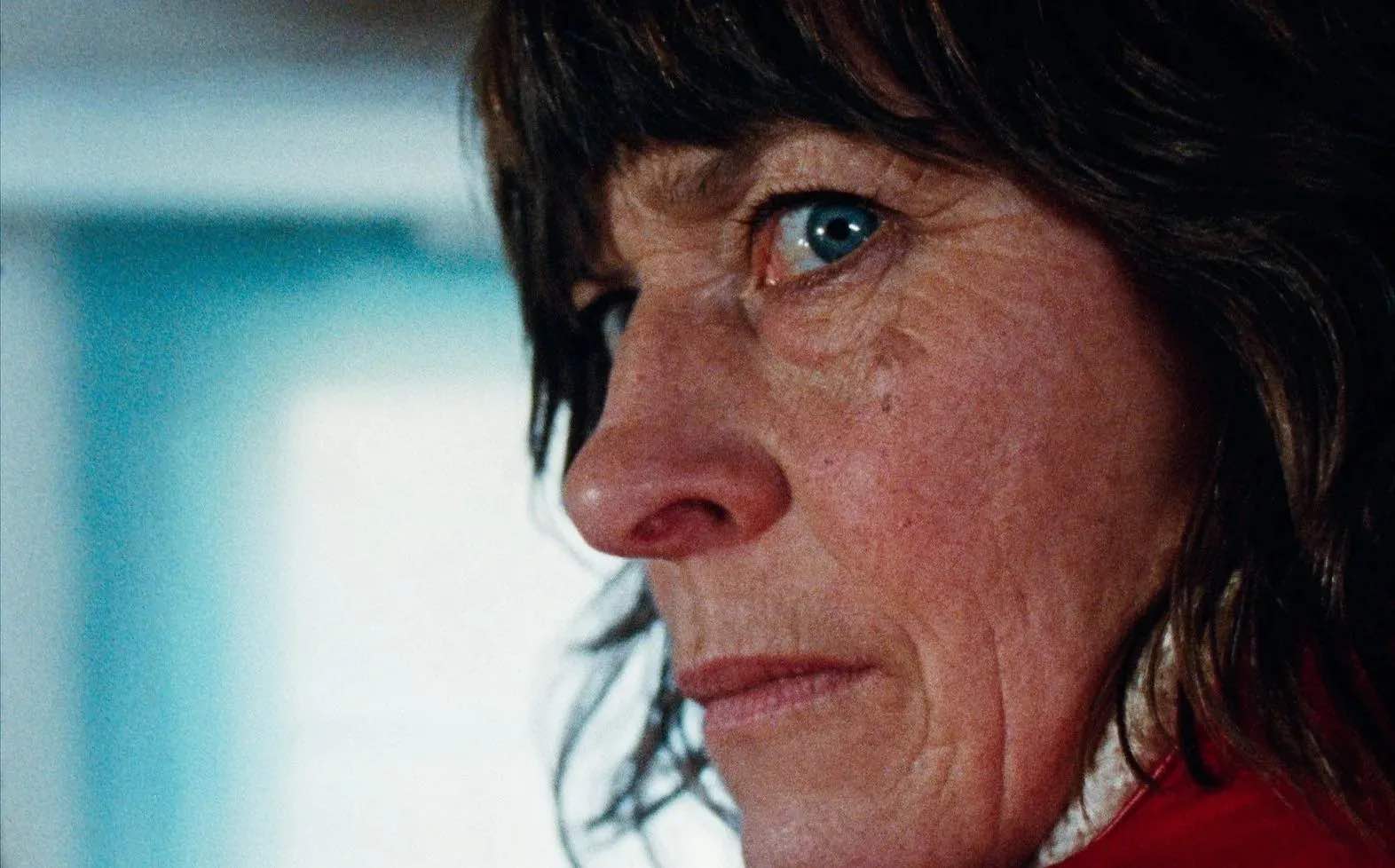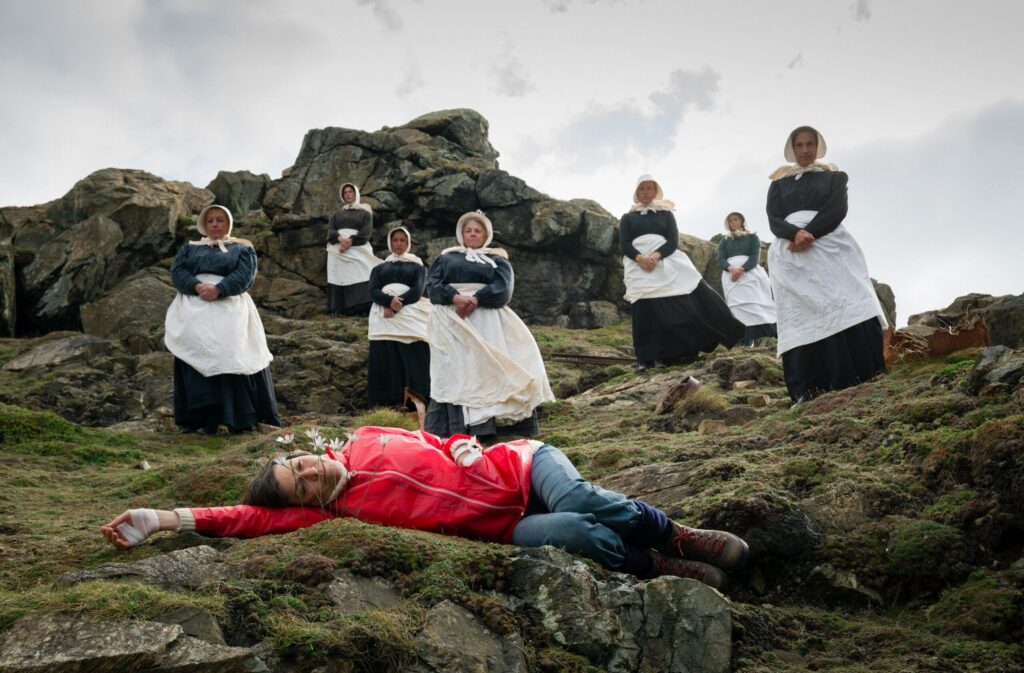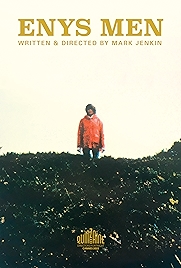How the hell do you follow Bait? A movie made for nothing shot on 16mm on a wind-up Bolex, an experiment, more or less, which somehow got off Dr Frankenstein’s table and made it into the big wide world. If you don’t know what I’m talking about… shakes head.
Enys Men is the answer, writer/director Mark Jenkin’s bold sideways move into colour but using the same basic equipment – wind-up camera, 16mm film (later digitised and then massively colour graded) – and with the sound post-dubbed. A tiny crew, a handful of actors, with the vast bulk of the action focusing on Mary Woodvine, who plays The Volunteer, a woman on a remote Cornish island in 1973 logging the progress of some endangered flower.
The Volunteer is on her own. She has a generator for electricity but is essentially camping out in an old house, making her notes, wandering along the shore, reading at night and listening to the occasional crackle coming over the radio. Just outside her door is an old mine, into which, every day, she ritualistically drops a stone and listens as it hits the water far below. It is a solitary, rhythmically self-sufficient existence. The Volunteer seems dedicated to her task and her choice of life.
The film’s title is in Cornish (an old British language – ie pre Saxon, pre Roman, more akin to Welsh and Breton – now making a comeback) and is pronounced “Ennis Main”, give or take (or that’s how it sounded to me when I heard Jenkin say it). It means Stone Island but the Cornish angle gives Jenkin a push-off point into folk-horror territory, with a story about a modern woman being overtaken by emanations from the past or memories made flesh.
The Volunteer is not alone. There is a young woman who appears from time to time in the house, never speaking, a forbidding boatman, a preacher who stands outside reading lines from the Bible. Eventually, as The Volunteer becomes more disocciated from reality – is she losing her mind, travelling in time, or being visited by spirits? – larger groups assemble. There are miners in the old mine, dressed like old fashioned miners. There are young women in matching school outfits.
Jenkin gives us establishing shots as much to introduce the grainy, vivid medium as person or place and then sets about disestablishing on a grand scale. In Enys Men the solid gets flimsy, the insubstantial gains weight. There is barely a word spoken and no explanation offered for what’s happening. It is all very wild and windswept, like a spooky Brontë novel.
All films are assembled in the edit suite but Enys Men most particularly. Jenkin’s images are not static but he uses them almost as if they were, insistently collaging together the meaning in the film with hundreds, maybe thousands of edits, from a hand holding a stone, to a rock covered in lichen, to a standing stone, to a bird plunging towards the sea, to Mary bathing and wondering why lichen is beginning to grow on her body too.
All films are assembled in the edit suite but Enys Men most particularly. Jenkin’s images are not static but he uses them almost as if they were, insistently collaging together the meaning in the film with hundreds, maybe thousands of edits, from a hand holding a stone, to a rock covered in lichen, to a standing stone, to a bird plunging towards the sea, to Mary bathing and wondering why lichen is beginning to grow on her body too.
The folk horror of a Wicker Man starts on a journey towards body horror, though much more obvious as an influence than either Robin Hardy or David Cronenberg is Nicolas Roeg, whose collaging style and use of editing techniques to conjure up dislocation Jenkin re-purposes freely – Walkabout goes walkabout.
Talking of which, The Volunteer is dressed in a red jacket much of the time. Jenkin says it wasn’t a deliberate nod to Don’t Look Now, more an accidental one. He’d originally intended it to be a yellow jacket, but was worried that yellow would summon memories of Charlotte Gainsbourg in Antichrist. So he went for red, and summoned memories of Nicolas Roeg instead.
It may be an accident but it’s a happy one. The past echoed on into the present in Don’t Look Now, as it does here. The standing stone is always there, even though no one is taking much notice of it.
For sheer storytelling impact, Enys Men doesn’t hit as hard as Bait did. Bait had a genuine conflict at its core; here Jenkin is trying to make solid something more nebulous. Mary Woodvine’s performance helps – it’s solid, foursquare in fact, and never edges over into horror acting. And how great to see her father, John Woodvine, as the preacher. Now 93 but in good shape, he belts out a hymn with a stout voice at one point.
Add this to the book on the rebirth of folk horror, alongside the likes of Midsommar, or the one on eco-horror, with Ben Wheatley’s In the Earth or Jaco Bouwer’s Gaia. It’s not a perfect fit in either category but adds impressive weight to both. Eco-folk horror, anyone?
Enys Men – Watch it/buy it at Amazon
I am an Amazon affiliate
© Steve Morrissey 2023


